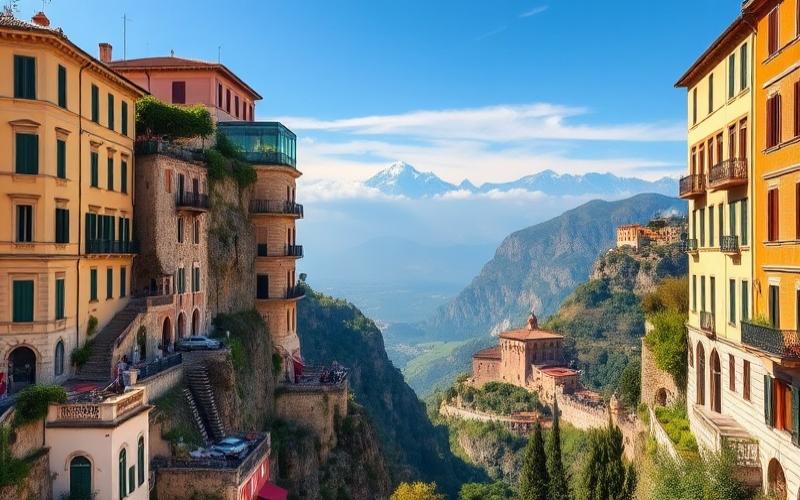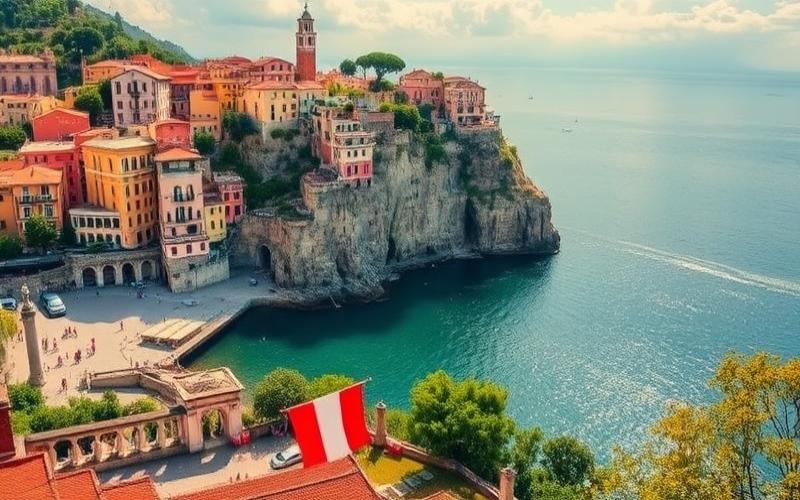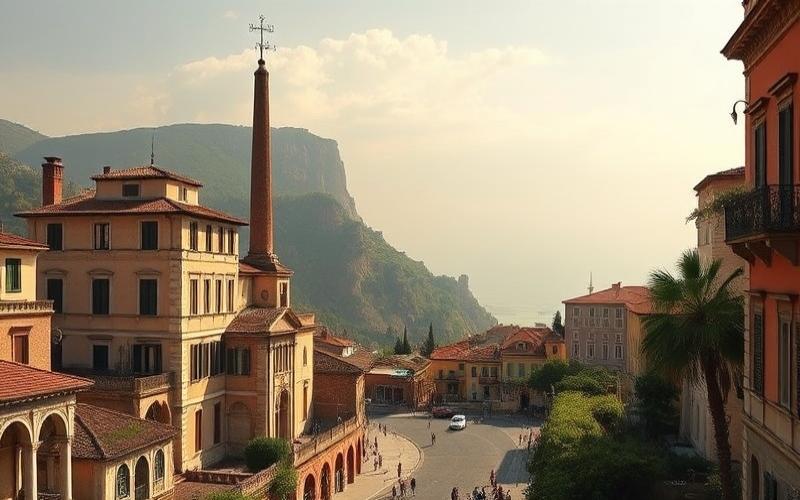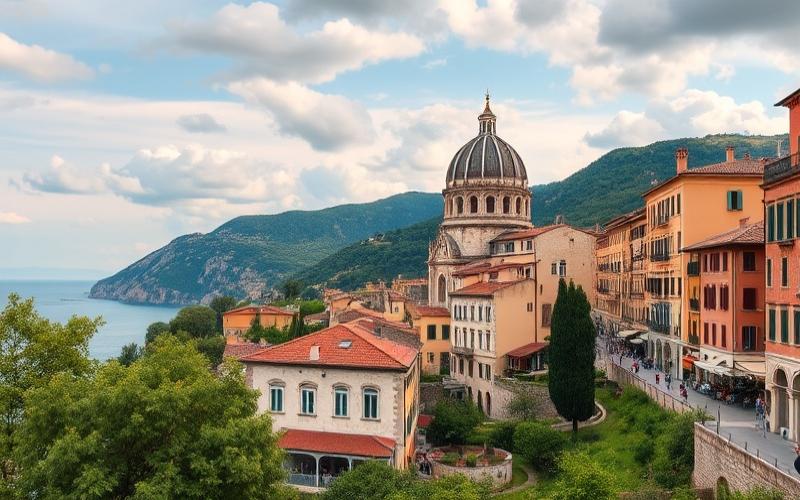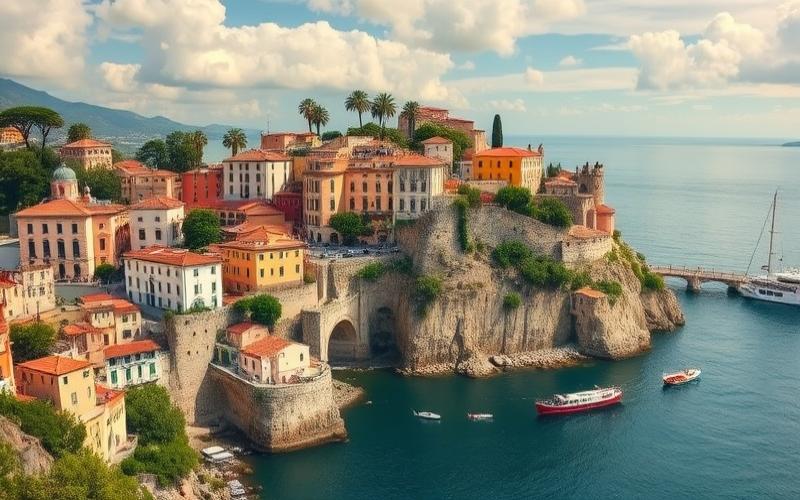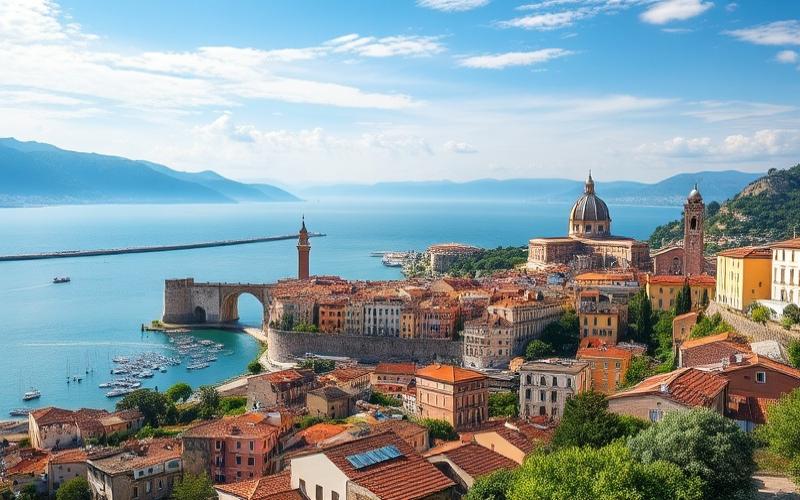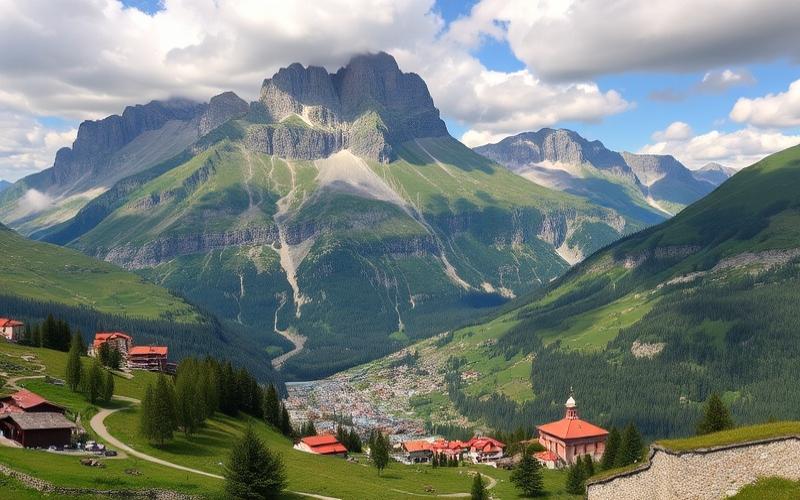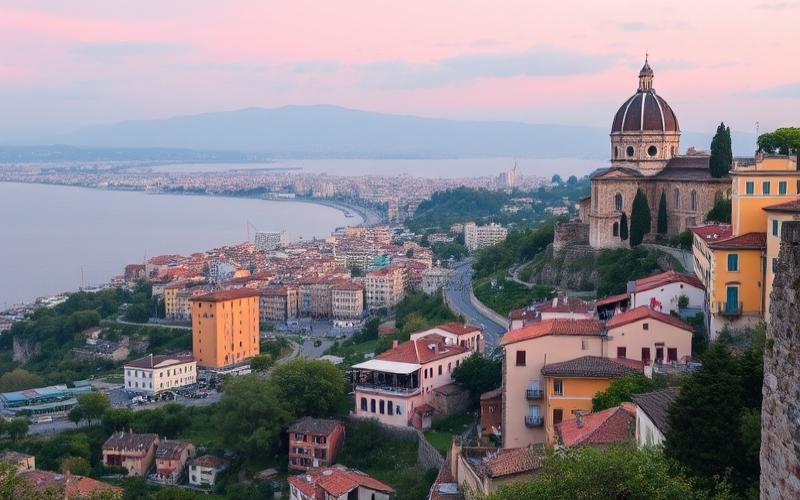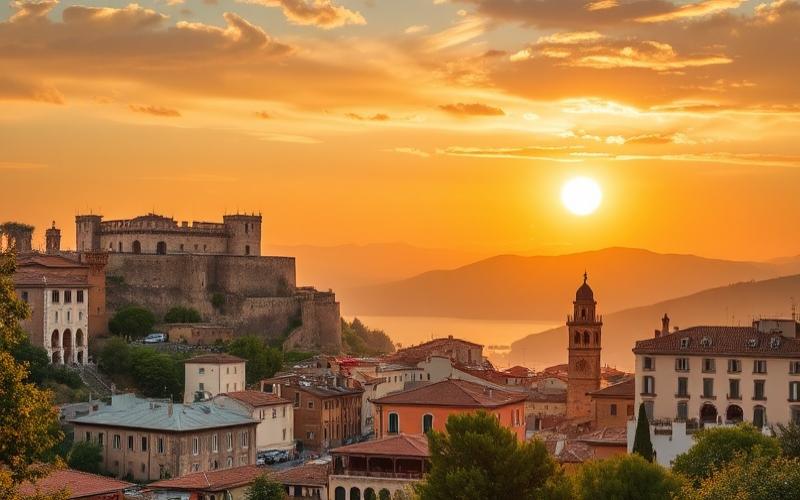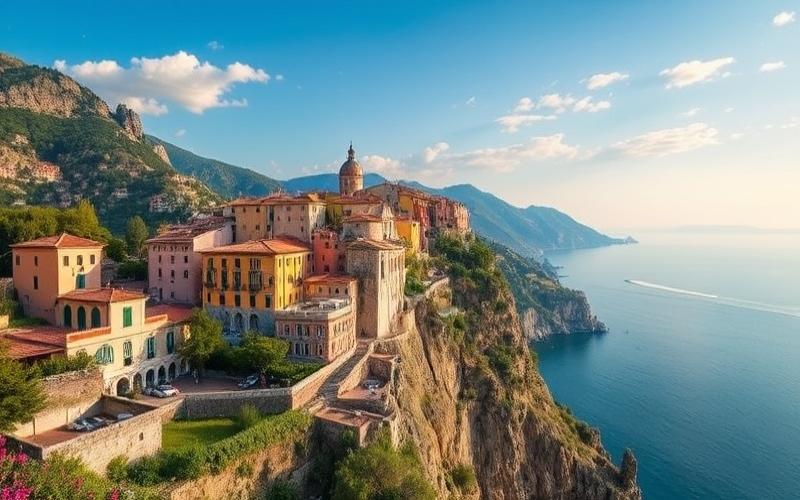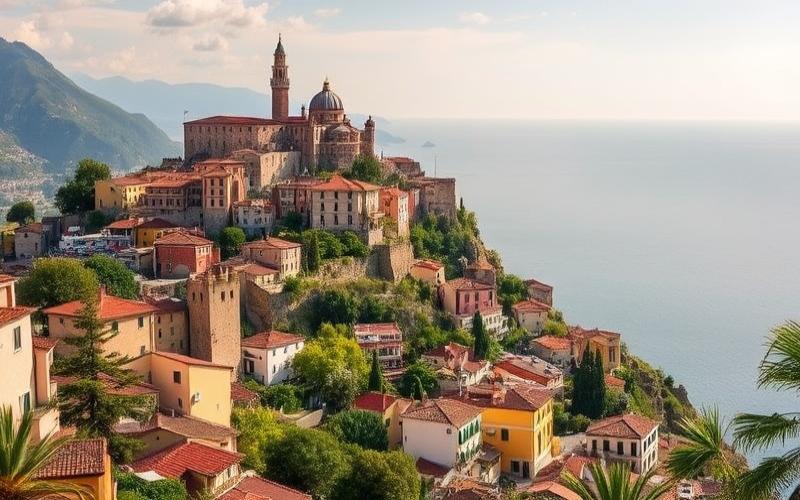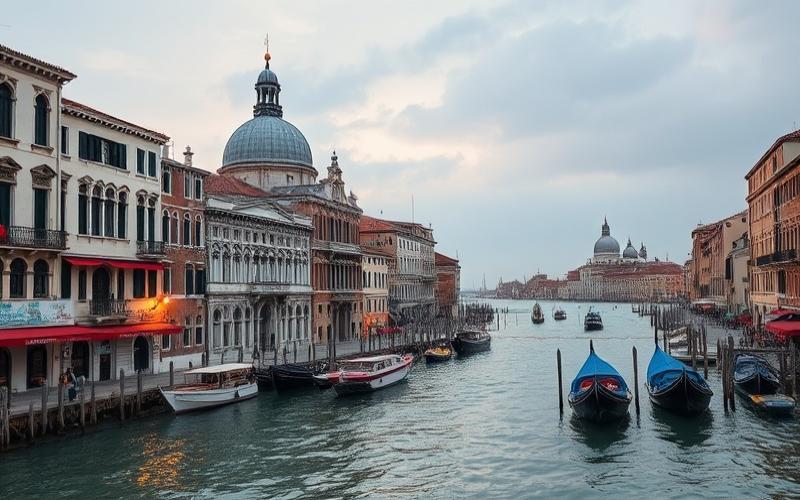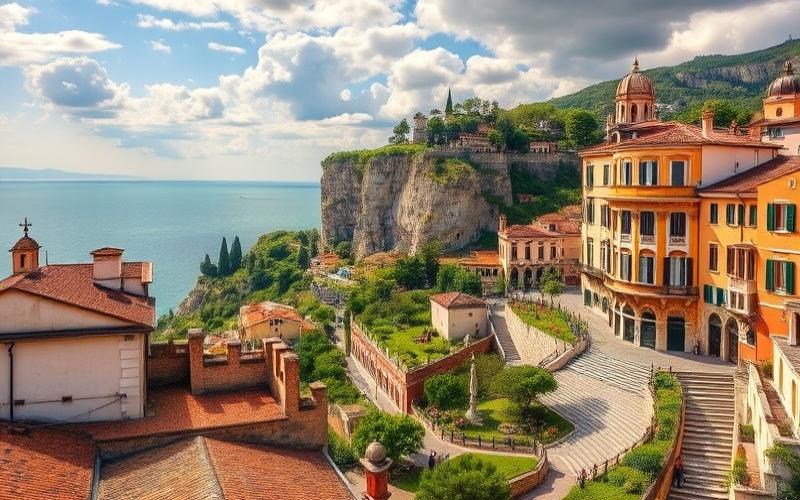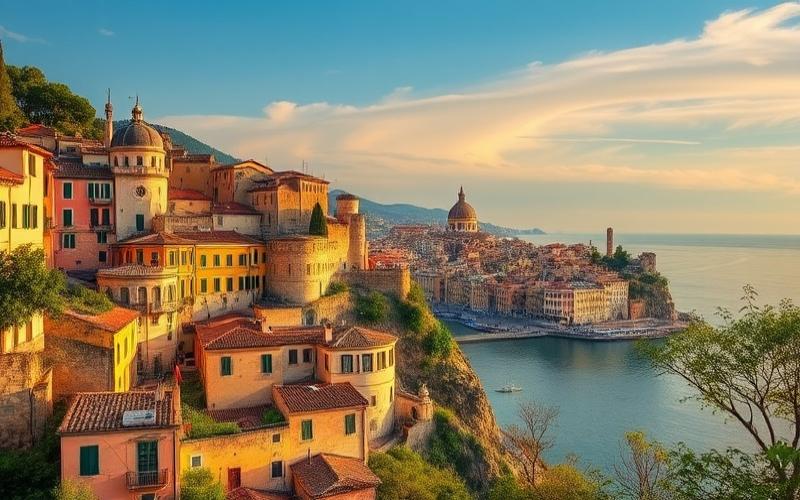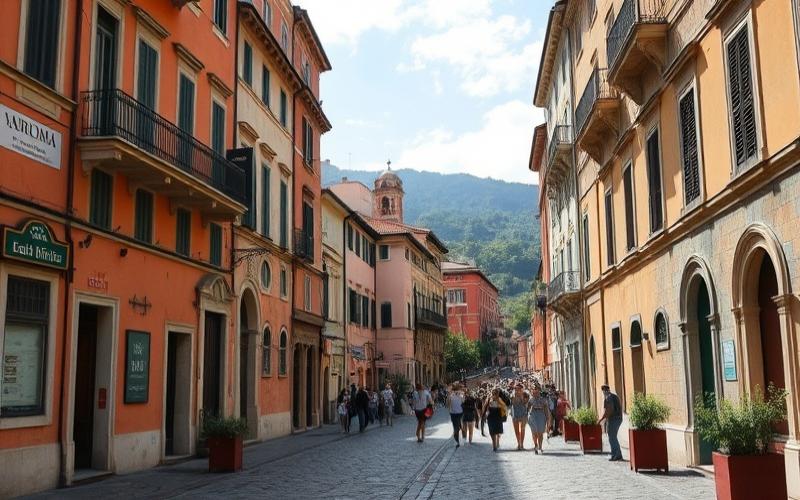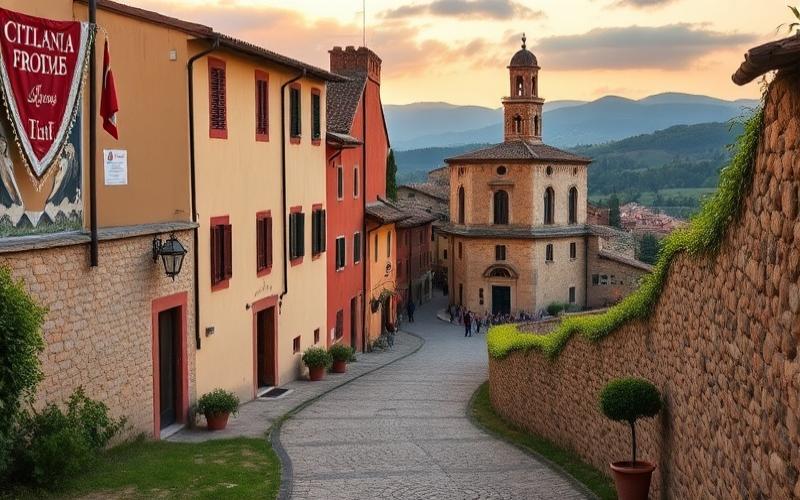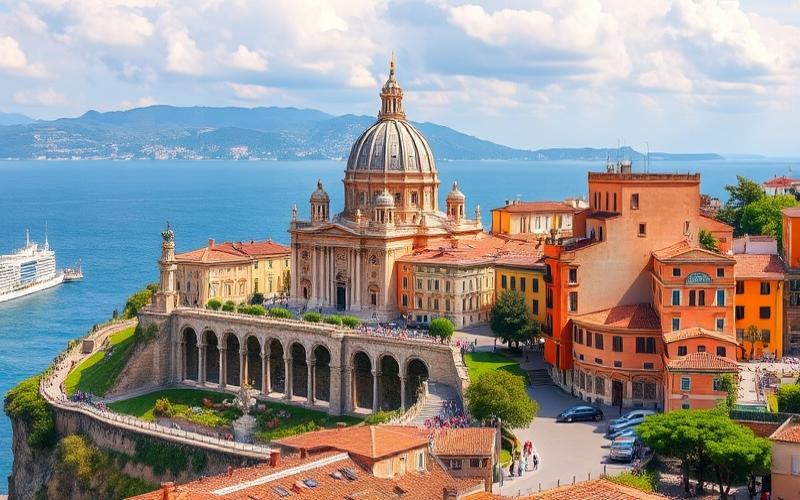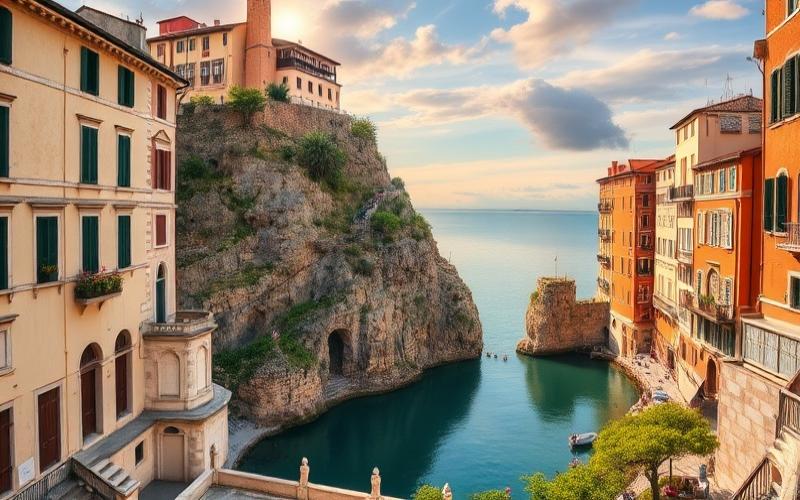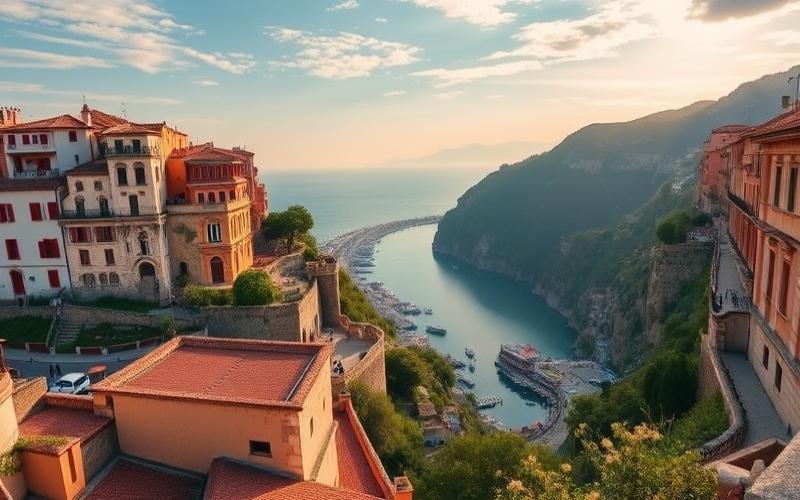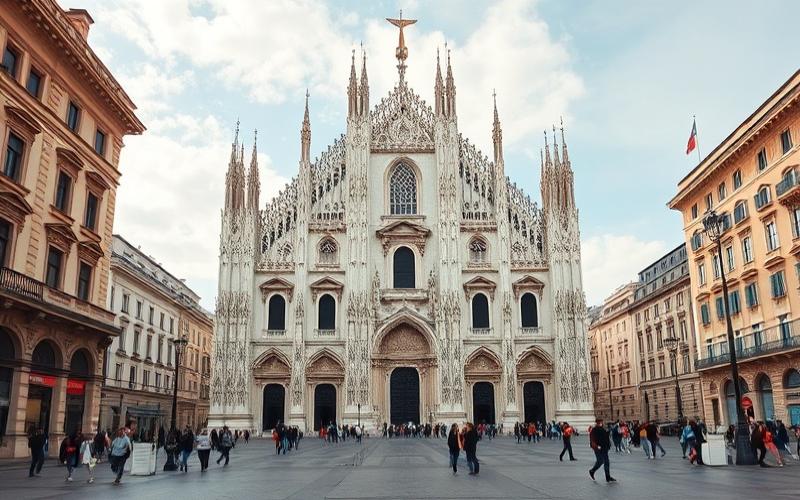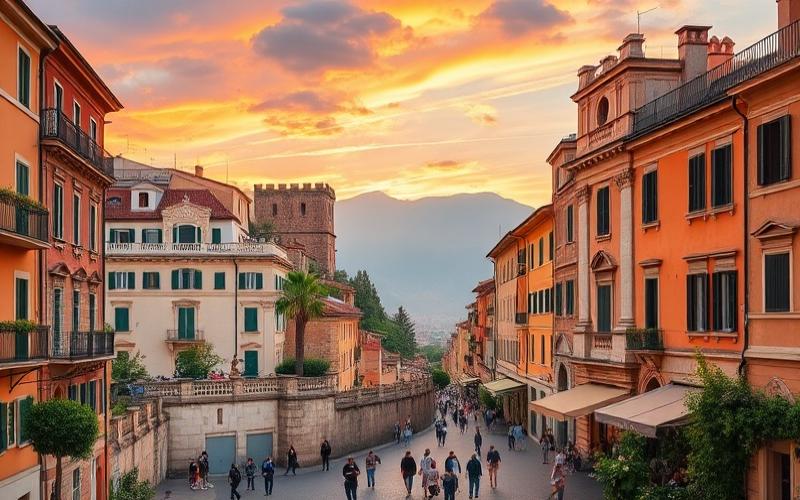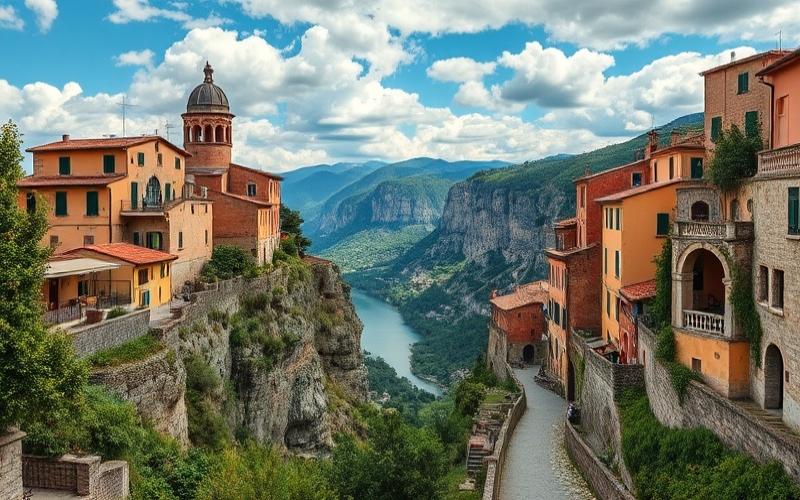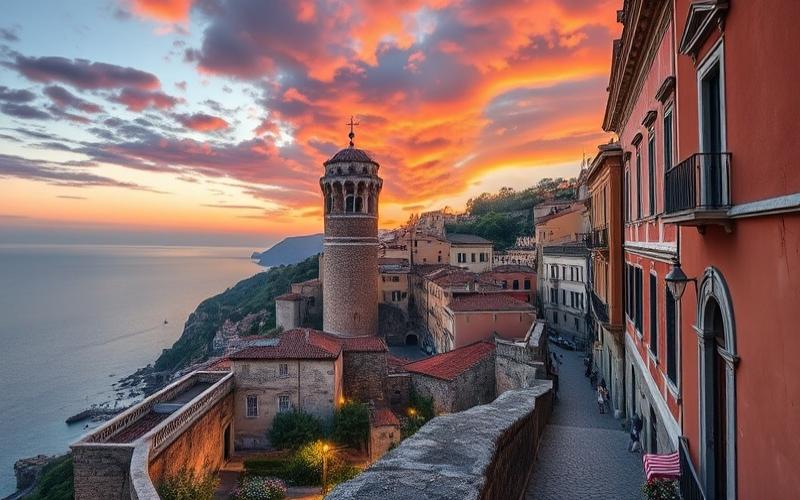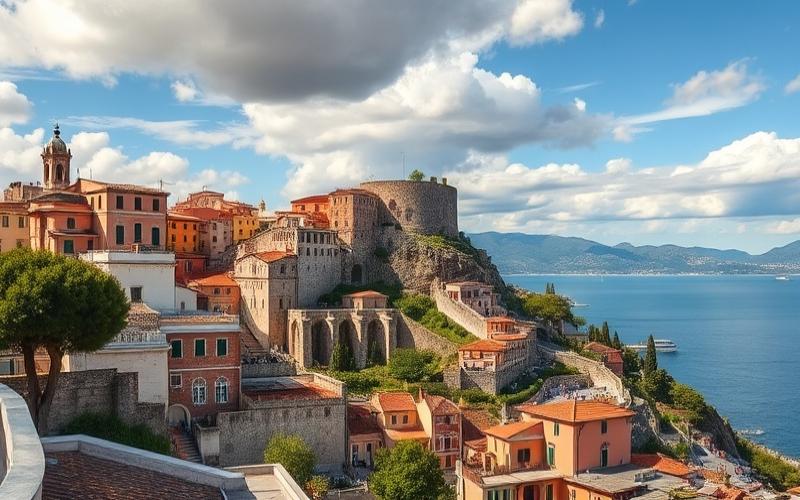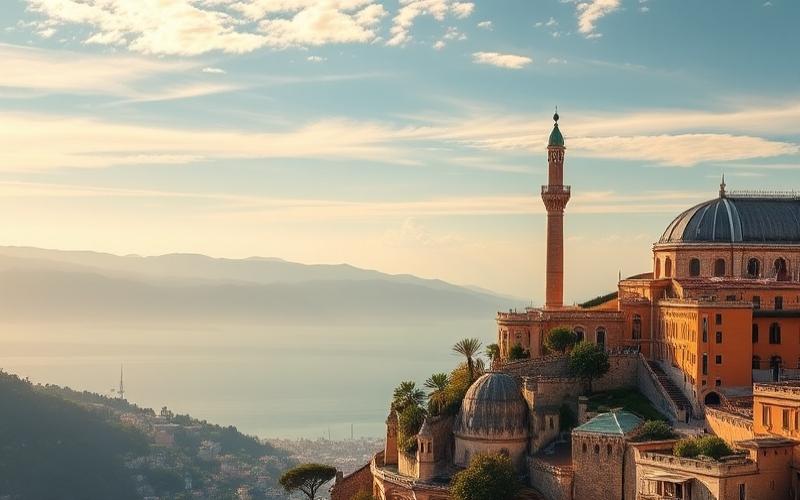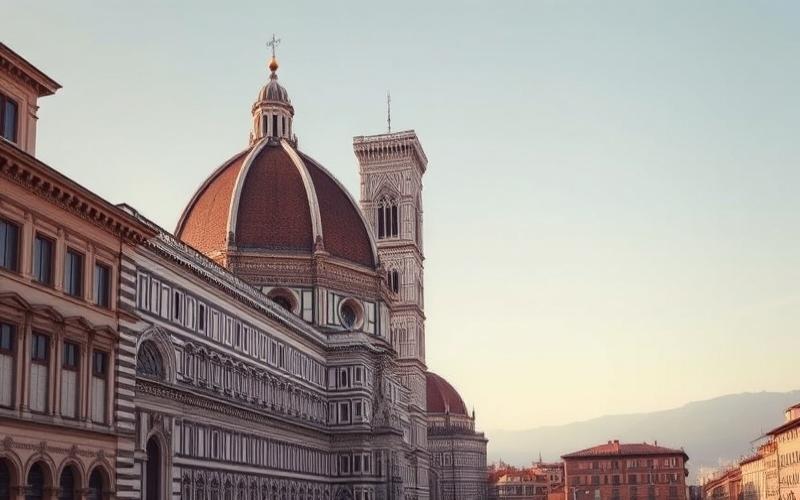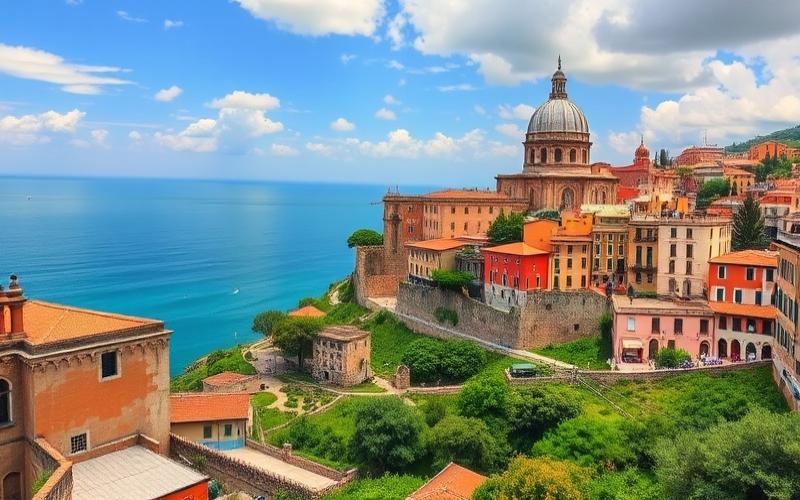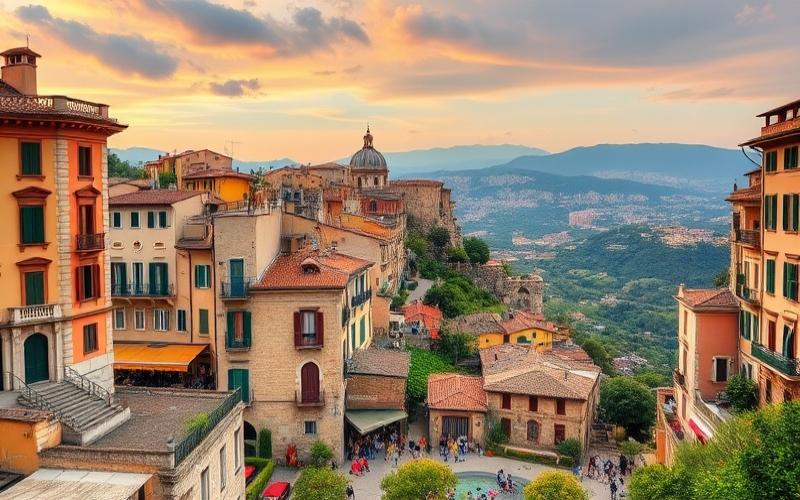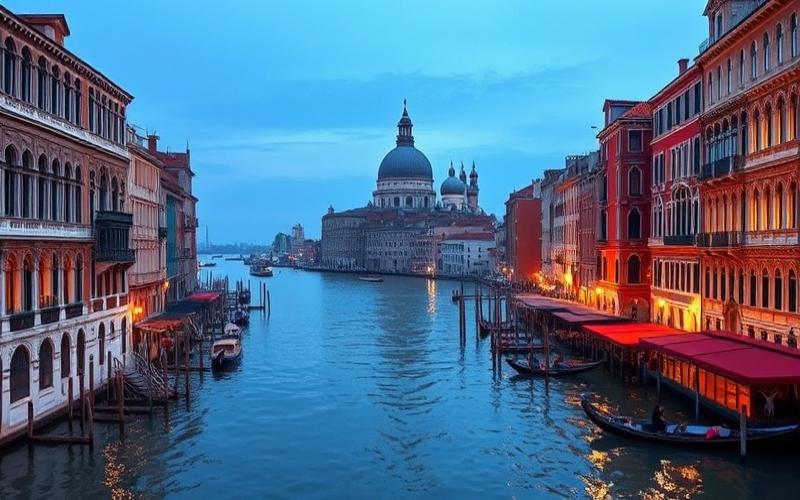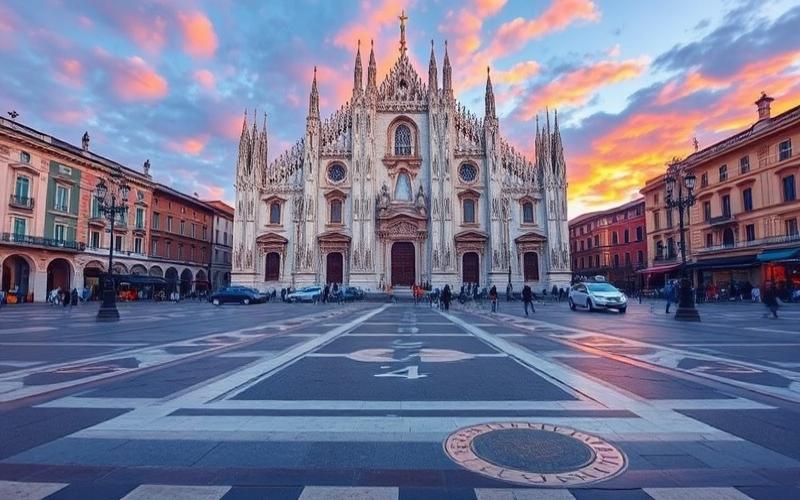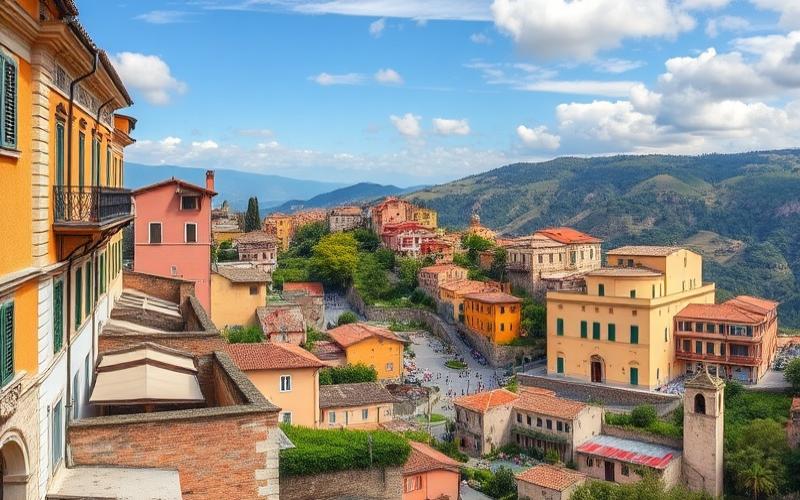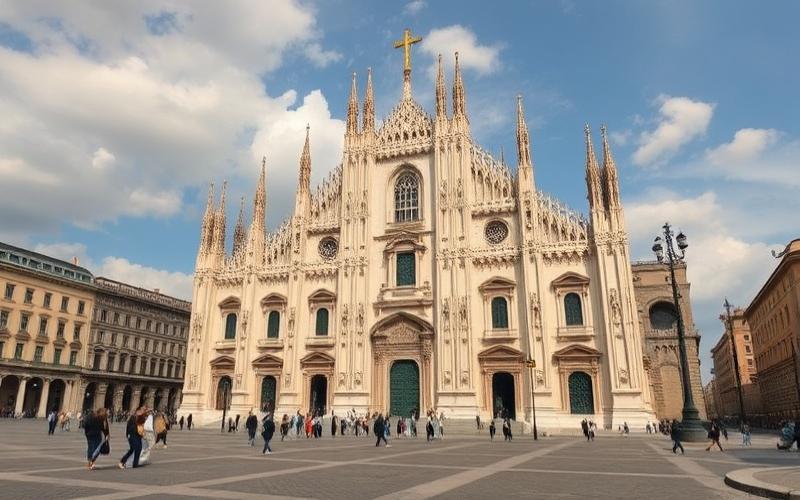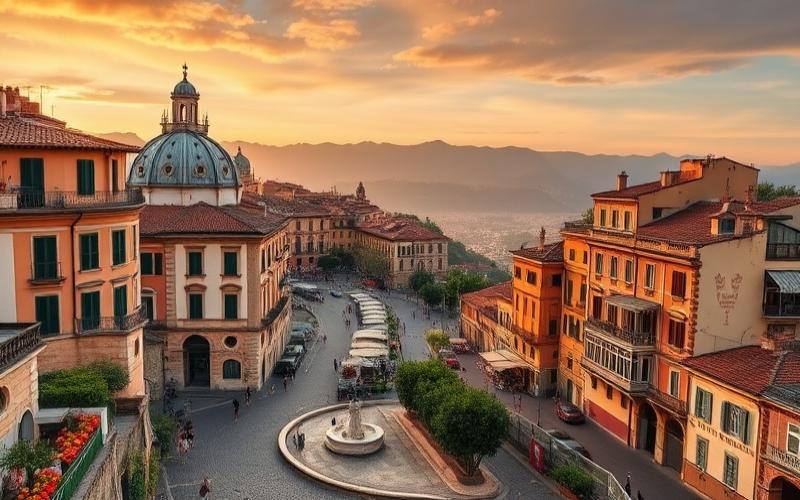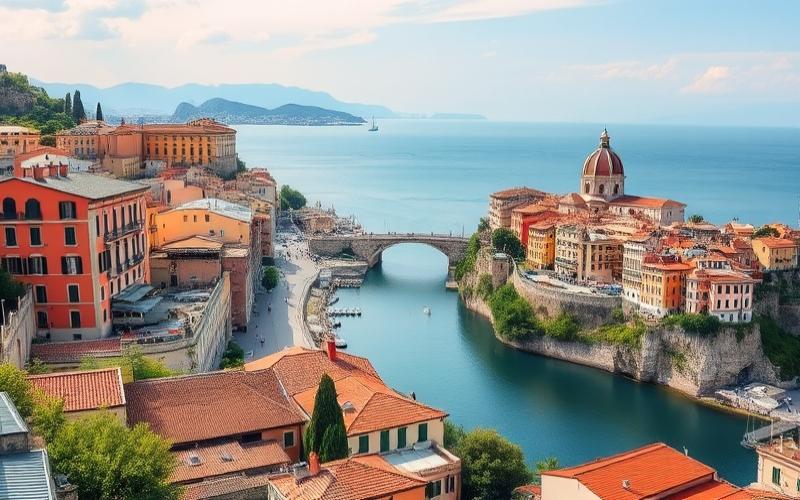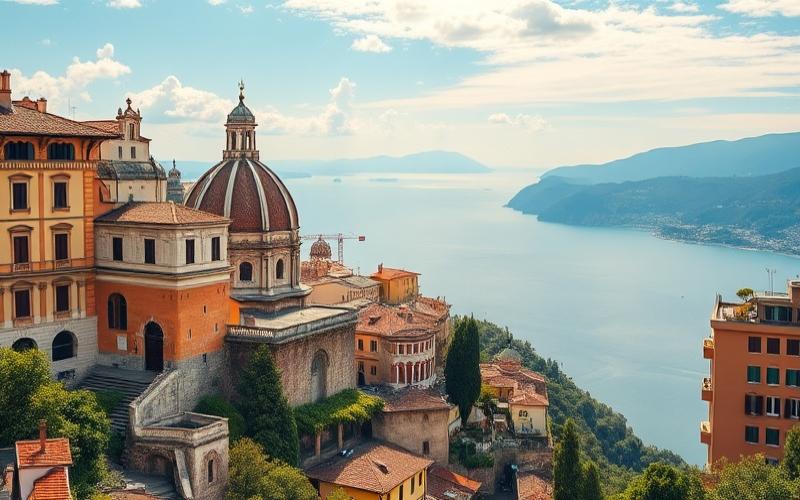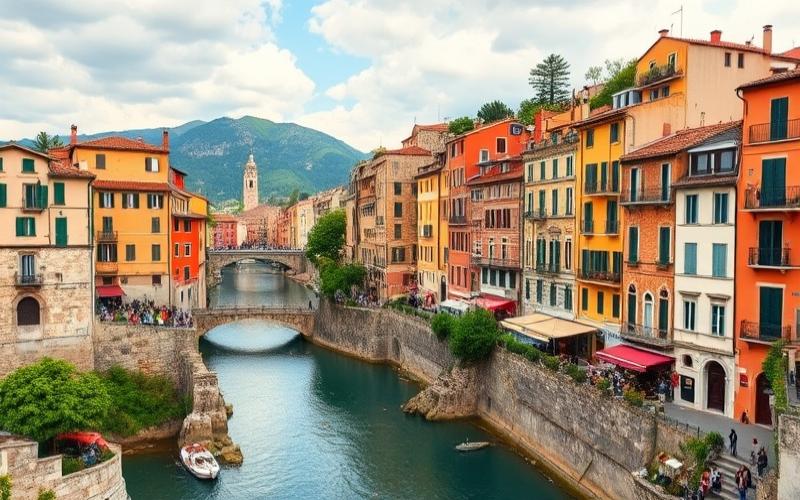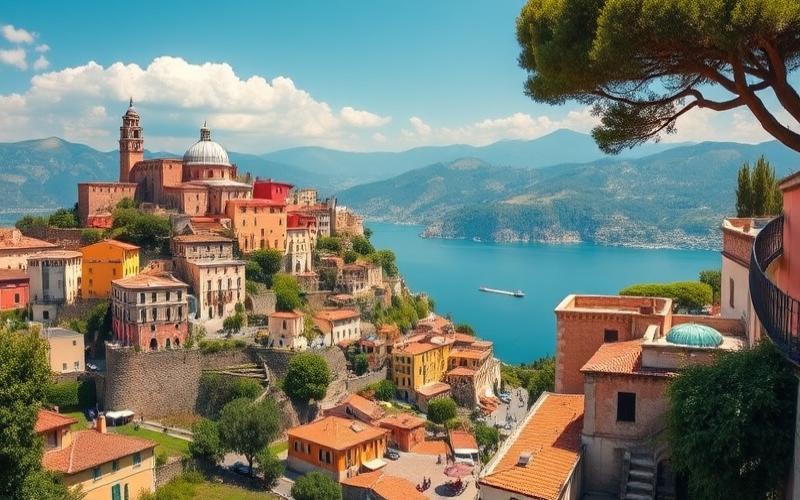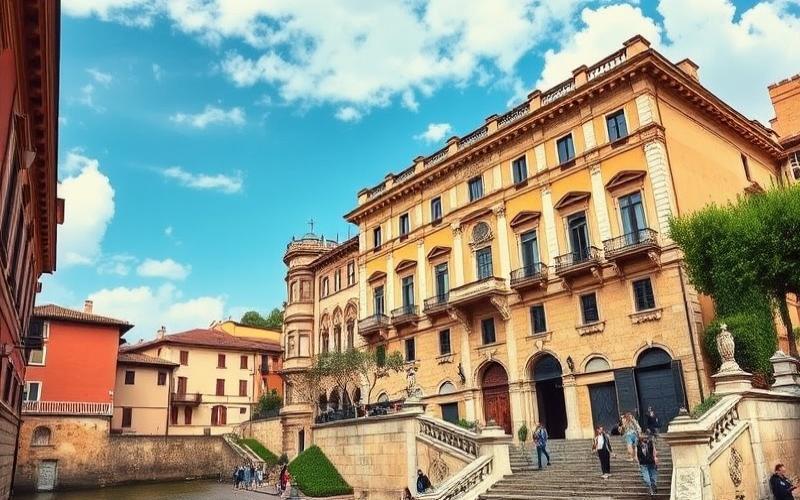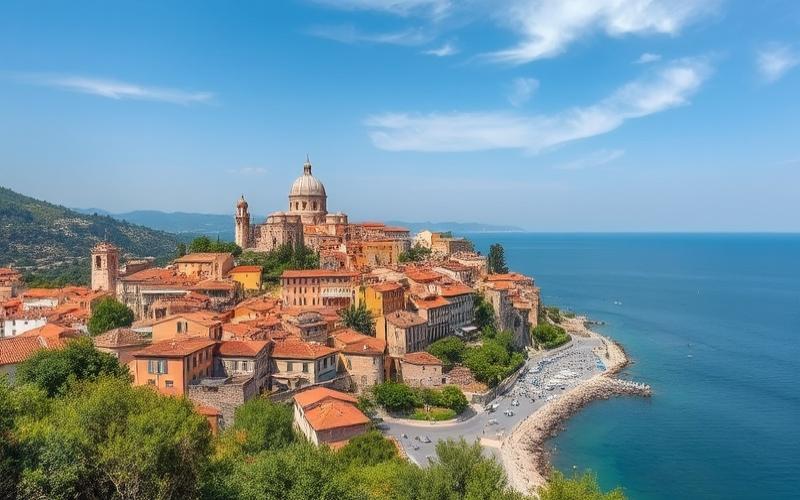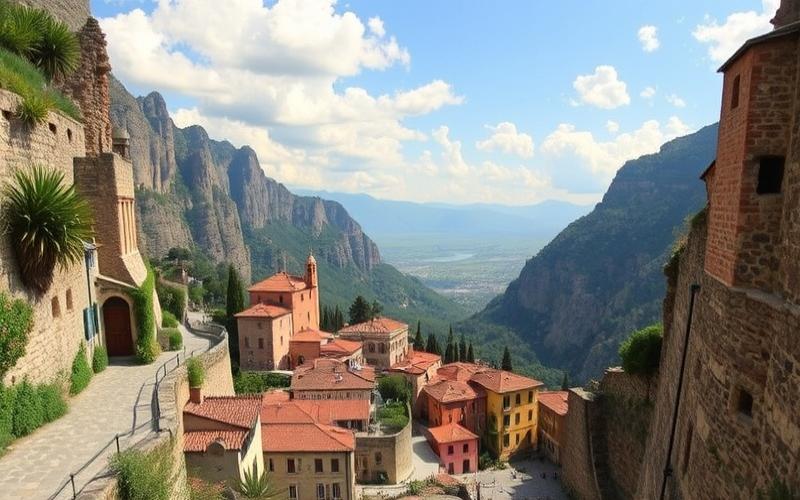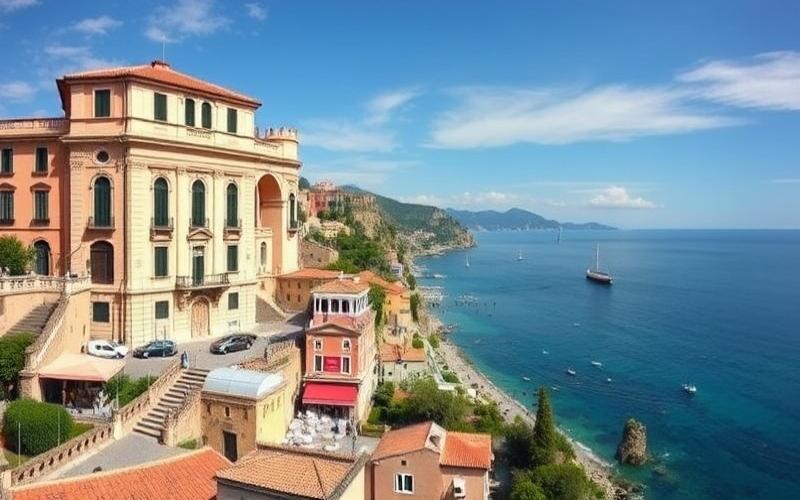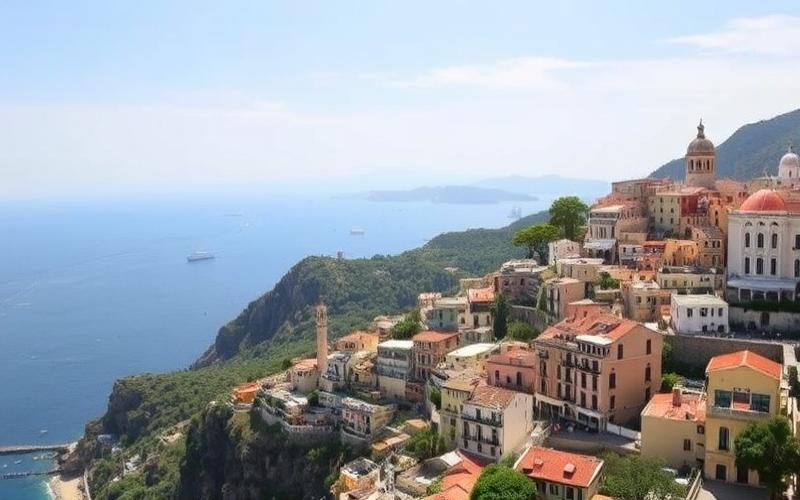
 Published on and written by Cyril Jarnias
Published on and written by Cyril Jarnias
The Importance of Photos in Italian Real Estate
In a real estate market as competitive as Italy’s, how properties are presented can make all the difference between a quick sale and a listing that struggles to attract attention.
Good photos, acting as true digital showcases, play a crucial role in capturing the interest of potential buyers.
Good to Know:
Through proven techniques, ingenious angles, and mastered lighting, it’s possible to transform even the most modest spaces into enticing offers.
By exploring the secrets of real estate photography, this article reveals how to enhance every property in a way that captivates and seduces buyers’ eyes.
Real Estate Photographer in Italy: How to Find the Right Professional
Essential Selection Criteria
- Professional experience specific to real estate: volume of completed shoots, diversity of properties (urban apartments, villas, rural estates, luxury), mastery of indoor/outdoor lighting constraints, delivery times, and consistent quality.
- Knowledge of the local Italian market: understanding of regional expectations (North vs. South, coastal vs. historic centers), standards of Italian portals, and seasonal sales/rental cycles.
- Portfolio of previous work: variety of cases, before/after shots, wide shots and details, color consistency, vertical line management, home staging setups, and examples of final deliverables (web gallery, PDF, short videos).
- Testimonials and references: reviews from local agencies, property owners, developers; evidence of recurring collaborations.
- Process and service coverage: scouting, light styling, shooting, post-production, multi-format delivery, usage rights, response times, professional liability insurance.
- Transparent pricing: packages by square footage, options (drones, 2D/3D plans, virtual tours), and cancellation terms.
Certifications, Training, and Proof of Competence
- Photography degrees and masters awarded in Italy (e.g., Accademia Italiana, IED Florence, programs in Milan/Rome) attest to a solid technical and methodological foundation.
- Professional certifications registered with RNCP (level 6, “Photographer”) in French-speaking Europe can demonstrate a standard of transferable skills (shooting, post-production, project management).
- Proof of continuing education: advanced HDR, architectural retouching, color management, drone piloting, photogrammetry, short real estate video.
- Drone licenses and insurance: in Italy, verification of UAS operator status (registrations, open/specific categories) and liability insurance policy.
- Proof of technical mastery: camera/lens technical sheets, ICC profiles, color workflows, RAW+JPEG examples, calibration charts, drone safety sheets.
Platforms and Networks for Finding Photographers in Italy
- Italian professional networks: photographer associations, directories from design/photography institutes (Florence, Rome, Milan).
- International portfolio platforms: professional websites dedicated to photo portfolios allowing filtering by real estate specialty and location.
- Local agency and MLS networks: recommendations from agencies, real estate franchises, communities of property managers and seasonal rentals.
- Professional social media: search by geolocated hashtags (#realestatephotographyitaly, #fotografiaimmobiliare, #MilanoRealEstate).
Italian Architectural Specifics to Understand
- Historical heritage: managing interiors with painted ceilings, vaults, marbles, and antique woodwork without overexposing or distorting hues.
- Regional typologies: trulli, masserie, casali, palazzi, Liberty villas, rationalist buildings; highlighting materials (stone, terracotta, travertine) and proportions.
- Dense urban contexts: narrow alleys, space constraints, contrasting light; choosing angles and focal lengths to maintain straight verticals and avoid distortion.
- Indoor/outdoor relationship: terraces, loggias, courtyards, sea/lagoon views; balanced exposure for windows and panoramic views via HDR/exposure blending.
Modern Technologies and Techniques to Prioritize
- HDR/exposure blending: balancing interior/exterior without halos or artificial colors; measured use for a natural look.
- Off-camera flash and “flambient”: combining ambient light + flash for accurate textures and neutral colors.
- Drones: highlighting property placement, gardens, proximity to sea/mountains; respecting no-fly zones and local permits.
- Virtual tours and digital twins: Matterport, LiDAR, or photogrammetry for 3D plans and immersive navigation.
- 2D/3D dimensioned plans: quick understanding of volumes; consistency with photos.
- Color management: screen calibration, ICC profile, consistent white balance between rooms.
- Delivery optimization: fast web export, metadata, versions adapted for Italian portals and vertical social media.
Practical Cooperation Tips for Owners/Agents–Photographers
Property Preparation
- Tidy up, declutter, neutralize personal items; light styling (textiles, plants, lighting).
- Clean reflective surfaces; use identical light bulbs; ironed curtains.
- Create a prioritized shot list: key rooms, views, material details, exteriors at specific times.
Logistics and Timing
- Choose the optimal time: golden hour for facades and exteriors; midday for dark rooms depending on orientation.
- Anticipate weather and wind for drones; plan roof/terrace access and condominium permissions.
- Block the schedule: 1–3 hours for an apartment, 3–6 hours for a villa; avoid simultaneous visits.
Brief and Expectations
- Define the target (residential, luxury, short-term rental) and uses (portals, brochures, social media).
- Specify the desired look: natural vs. editorial, color palette, retouching level.
- Establish deliverables: number of images, vertical/horizontal ratio, panoramas, 2D/3D plans, short video, deadlines.
On Site
- Let the photographer compose: control verticals, micro-move furniture, manage curtains/lighting.
- Allow quick HDR/flash tests to adapt workflow room by room.
Post-Production and Validation
- Plan an initial contact-sheet selection; 1 round of retouching included; consistency of tones for walls/woodwork/marble.
- Request compressed web versions and HD printable versions; file naming and IPTC for SEO/location.
Legal and Rights
Clarify usage rights (duration, territories, media), credit mention if necessary, and condominium/listed facade permissions.
Marketing Impact
- Publish quickly with a logical image order; strong hero photo first; consistency with plan and listing text.
- Utilize vertical formats and carousels; A/B test main thumbnail; measure click-through rates and viewing time.
Comparison Checklist for Photographers
| Criterion | Concrete Indicators | To Verify |
|---|---|---|
| Real Estate Experience | Number of properties/year, covered typologies | Case studies, style consistency |
| Local Knowledge | References by city/region | Adaptation to architectural styles |
| Portfolio | Natural rendering, straight verticals, window management | Example RAW files, complete series |
| Technology | Mastered HDR, off-camera flash, drone, 3D | Drone licenses, insurance, equipment |
| Process | Scouting, shot list, deadlines, QA | Contract, rights, detailed deliverables |
| Client Reviews | Ratings, recurring professional clients | Reference contacts |
| Price | Clear packages + options | Cancellation/travel conditions |
Good to Know:
When choosing a real estate photographer in Italy, it is essential to consider their professional experience and knowledge of the local real estate market, which guarantee photos suited to the expectations of potential buyers. A varied and rich portfolio of previous work allows you to assess the quality of their work, while certifications or specialized training, such as HDR photography or drone use, add a layer of credibility. Platforms like Fotolia or professional networks such as LinkedIn are useful for finding qualified experts. Ensure the photographer understands Italian architectural specifics and uses modern technologies to capture the unique essence of properties. Finally, to maximize results, clearly define your needs, collaborate closely, and provide constructive feedback to obtain images that effectively attract buyers.
The Best Photo Angles to Enhance a Living Room
Natural light in Italy is a major asset for enhancing a living room: it varies from the sun-drenched south to the more diffuse and temperate north, directly influencing angles, exposure, and material rendering.
- South (Apulia, Sicily, Sardinia): prioritize shots early morning or late afternoon, slightly oblique angle towards bay windows to avoid blown-out highlights. Use curtains as natural diffusers and place the living room in soft backlight to reveal silhouettes and fabric textures.
- Center (Tuscany, Lazio): golden and moderate light ideal for a 45° angle from a room corner, combining depth and volume readability; align the main diagonal with a secondary light source (side window) to shape forms.
- North (Lombardy, Piedmont, Veneto): cooler and more homogeneous light, perfect for frontal views or slight downward angles from a doorway; open curtains to capture ambient brightness and use light surfaces (walls, rugs) as passive reflectors.
- Mountain and lakes: leverage water or snow reflections with a low angle, camera close to the ground, to amplify overall brightness; correct white balance to preserve the warmth of wood and leather.
Essential Lighting Tips
- Turn off warm light fixtures during daylight shots to avoid mixed color casts.
- Expose for highlights and lift shadows in post-processing.
- Use a white reflector or large foam core on the side opposite the window to balance contrasts.
- Schedule series at different times to capture regional micro-variations in hue (amber in the south, pearly in the north).
Angles That Magnify Italian Architecture
- Refined moldings: lateral grazing angle at 30–45° relative to the window to create fine cast shadows revealing relief; frame in tight horizontal shot for a frieze, or slight low angle to emphasize ceiling height.
- Vaulted ceilings: controlled low angle from a room corner, moderate wide-angle lens (24–28 mm equiv.) to preserve curvature without excessive distortion; keep vertical lines straight via perspective correction.
- Arches and frames: compose with a frame within the frame (the arch as foreground) at 45° to give depth and direct the gaze towards the sofa.
- Woodwork and antique doors: soft side light and tangential angle to reveal grain and patina; avoid direct flash.
Using Traditional Elements as Focal Points
Frescoes
- Compose with the fresco in the background, sofa off-centered on the opposite third for dynamic balance.
- Reduce aperture (f/5.6–f/8) to keep the fresco readable without flattening the subject.
- Avoid reflections by shifting 10–15° from the wall plane.
Terrazzo Floors
- Low diagonal angle across the room to transform mineral chips into leading texture; leave a strip of floor in the foreground as a leading line.
- Exploit morning grazing light to make aggregates sparkle without overexposing.
- Place a partial neutral rug to break the pattern if it’s very busy and guide the eye towards the furniture.
Exposed Stone and Tiles
- Frame in three planes (foreground: texture, middle: seating, background: opening/fresco) to give a coherent heritage reading.
- Adjust saturation locally to preserve warmth without orange shift.
Key Angles for an Italian Living Room
- 45° from a corner: ideal balance between depth and volume readability; highlights modular sofas and circulation paths.
- Centered frontal view: perfect for symmetry of moldings, French doors, and chair alignments; use a minimal side step to avoid direct reflections.
- Slight downward angle from threshold: offers an orderly overall shot, useful for showing the terrazzo floor plan and furniture arrangement.
- Gentle low angle: reserved for vaulted ceilings and chandeliers; correct verticals to preserve elegance.
Composition Tips for Warmth and Elegance
- Rule of thirds applied to light–material duo: place the main light source on one third and the sofa on the other for warm visual tension.
- Colors and materials: blend a warm palette (ochres, terracotta, walnut) with light touches for breathing room; let brushed metals catch side glints.
- Mastered negative space: maintain breathing zones around key pieces (50–70 cm visual space between sofas and walls) to avoid frame suffocation.
- Alignments: identify a master line (rug edge, terrazzo joint, cornice) and use it to stabilize the horizon.
- Layering of planes: suggestive foreground (armrest, majolica vase), main plane (seating), heritage background (fresco/vault) for depth and storytelling.
- Textiles: introduce a wool throw, washed linen, or velvet to absorb highlights and reinforce a welcoming feel.
- Controlled reflections: glass or marble coffee tables reflect light; tilt the camera slightly to avoid distracting specular reflections.
- Living details: unlit candles, books, fruit bowl, or local flowers (olive, laurel) for subtle warmth without clutter.
Settings and Practical Application
- Focal length: 24–35 mm for overall views; 50–85 mm to isolate moldings and frescoes without distortion.
- Aperture: f/5.6–f/8 for overall sharpness; open to f/2.8–f/4 for textured details.
- Tripod and bracketing: subtle HDR blending to manage strong southern dynamic range; maintain natural look.
- White balance: daylight in the south; auto or custom in the north, with slight warm correction (+100–300 K) if needed to restore coziness.
- Post-processing: very soft S-curve, local micro-contrast boost on terrazzo and woodwork, moderate noise reduction in shadows.
Quick Checklist
- Clean windows, curtains in place, light fixtures off during the day.
- Aligned furniture, straight horizon, visual breathing room around key pieces.
- 45° or room corner angle for depth, moderate low angle for vaults.
- Readable fresco in background, terrazzo used as composition guide.
- Expose for highlights, reflector on shadow side, bracketing if needed.
Good to Know:
To capture all the magic of an Italian living room, prioritize natural light which varies beautifully between regions, from the sun-drenched south to the more temperate north, diffusing a warm and authentic ambiance. Leverage bright openings to flood the space with light and highlight architectural details such as refined moldings and typically Italian vaulted ceilings. Position yourself at the height of traditional elements, like terrazzo floors or wall frescoes, to transform them into focal points accentuating the room’s elegance. Ensure balanced compositions by harmoniously integrating furniture and decor objects to reflect the authenticity and warm intimacy inherent to Italian living rooms.
The Use of Drones and Virtual Tours in Italian Real Estate
Drones have profoundly transformed real estate photography in Italy by offering spectacular aerial shots that reveal a property’s placement in its landscape, the quality of its environment, access to amenities, and the condition of the roof—elements hard to perceive from the ground. By showing the plot, exterior volumes, surroundings, and open views, they enhance listing attractiveness and facilitate buyer projection, especially for villas, estates, resorts, and historic properties.
Highlighting the Property and Its Context
- Overall views to understand orientation, terrain, access, and neighborhood.
- Visualization of landscape assets: coastline, vineyards, olive groves, historic centers, mountains.
- Visual inspection of the roof, high facades, and terraces.
- Visual storytelling via cinematic shots: ascents, orbits, perspective reveals.
Quantifiable Marketing Impacts
- Clearer and differentiating listings, promoting shorter sales cycles.
- Increased engagement rates thanks to premium visuals and aerial videos.
- “High-end” positioning for prestige listings and new developments.
Innovations in Virtual Tours
3D digital twins, guided 360° tours, and web streaming allow international buyers to explore a property remotely, room by room, with measurements, plans, and interactive annotations.
Key Technological Components
- LiDAR scans/photogrammetry for accurate 3D models and dimensioned plans.
- HDR 360° panoramas linked with hotspots, technical sheets, and media tags.
- Optimized streaming (progressive loading) and mobile/VR compatibility.
- CRM integration and analytics to track interest by room or content.
Benefits for an International Market
- Pre-qualification of foreign prospects without initial travel.
- Reduction of language barriers via multilingual interfaces.
- Possibility of remote “live” guided tours combining 3D and video conferencing.
Economic Advantages for Agents and Sellers
Time savings, reduction of unproductive visits, better conversion, and controlled unit costs compared to multiple physical visits.
Main Economic Levers
- Decrease in the number of in-person visits needed to reach an offer.
- Shortened marketing timeline thanks to more intense online exposure from day one.
- Content pooling (photos, 360°, drone video, plans) for all media.
- Low marginal cost for reuse: social media, portals, emailing, press kits.
Common Performance Indicators
- Increase in click-through rate and session time per listing.
- Higher lead qualification rate before visits.
- Reduction in logistical costs (travel, repeated staging, coordination).
Specific Regulations in Italy for Drone Use in Real Estate
The EASA/ENAC framework imposes legal and safety requirements based on the operation category, location, and proximity to third parties.
Principles to Respect
- Operator and drone registration, identification number displayed.
- Remote pilot training and certification according to category (Open A1/A2/A3; Specific for complex cases).
- Risk assessment (SORA) and ENAC authorizations for “Specific” operations (dense urban areas, flying over uninvolved third parties).
- Respect for altitudes and UAS geographical zones (No-Fly/Geo-awareness), coordination near airports and sensitive sites.
- Privacy management: avoid shots identifying people and respect GDPR (blurred area if necessary).
- Operational safety: secured perimeter, liability insurance, pre-flight checklists, emergency plans.
Concrete Success Examples
Coastal Villa in Liguria
- Drone filming at dawn showing private sea access and sun/terrace alignment.
- Multilingual 360° virtual tour with interactive plan and window measurements.
- 9 qualified inquiries from abroad in 10 days, 3 physical visits, offer accepted at day 21.
Masseria in Apulia
- Drone photogrammetry to render all trulli and olive groves.
- 3D tour + seasonal aerial video (day/night).
- Sale to a Northern European buyer without a second visit, under 30 days, thanks to technical due diligence integrated into the tour.
Attico in Milan
- Regulated drone clip in urban environment with limited orbital shots and authorized air corridors.
- 360° tour with virtual staging of the terrace extension.
- 40% international leads, firm offer at day 14.
Disclaimer: The information provided on this website is for informational purposes only and does not constitute financial, legal, or professional advice. We encourage you to consult qualified experts before making any investment, real estate, or expatriation decisions. Although we strive to maintain up-to-date and accurate information, we do not guarantee the completeness, accuracy, or timeliness of the proposed content. As investment and expatriation involve risks, we disclaim any liability for potential losses or damages arising from the use of this site. Your use of this site confirms your acceptance of these terms and your understanding of the associated risks.

